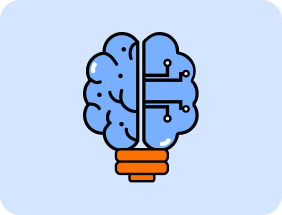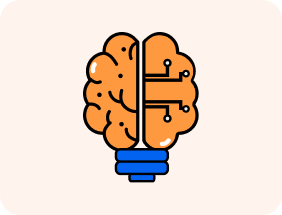Mind-Wandering vs. Reflective Thinking: The Thin Line That Impacts Focus
Have you ever caught yourself staring at your screen, lost in random thoughts, only to realize you haven’t done much? That moment is a classic example of mind-wandering. It is a common mental drift that affects focus, learning, and productivity.
But not all mental drifting is bad. When guided with purpose, it becomes reflective thinking, a deeper form of thought that strengthens understanding and decision-making.
In this blog, we’ll explore the differences between the two, how each affects focus, and how educators and learners can utilize platforms like YMetaconnect to develop self-awareness and cultivate deeper thinking habits that support meaningful learning. Let’s break it down step by step.
Understanding Mind-Wandering
Your mind wanders when your thoughts drift away from what you’re doing. It’s like your mind takes small breaks without asking permission. Research shows that people spend nearly half of their waking time in this state. While it can sometimes spark creativity, too much of it often leads to distraction and a loss of focus.
1. When It Helps and When It Hurts?
A wandering mind isn’t always a bad thing. Sometimes it helps people connect ideas or come up with solutions when they aren’t trying too hard. But in learning environments, frequent wandering can interrupt concentration, slow progress, and weaken memory retention. Recognizing these patterns is the first step to controlling them.
What is Reflective Thinking?
Reflective thinking is the process of looking back on experiences, analyzing what worked and what didn’t, and learning from it. Instead of random thoughts, it’s guided and intentional. Reflective thinkers don’t just act; they pause, question, and understand.
It helps students and professionals connect knowledge with real-life situations. By pausing to think about what they’ve learned, they build better judgment, problem-solving, and focus. In education, reflective practices are essential for deeper thinking, where learning moves beyond memorization to understanding how and why things happen.
Mind-Wandering vs Reflective Thinking
At first glance, mind-wandering vs reflective thinking might seem similar as they both involve inner thought. But the difference lies in direction and purpose. Mind-wandering is spontaneous and often unrelated to the current task. Reflective thinking, on the other hand, is deliberate. It asks “why” and “how” instead of “what if.”
1. Why the Difference Matters?
The type of thinking we engage in affects how we focus, remember, and learn. Mind-wandering can scatter energy, while reflection gathers it. Understanding this distinction helps learners shift from passive drifting to active reflection, one that improves attention span and long-term growth.
The Impact of Mind-Wandering on Focus
When thoughts drift, focus weakens. During study sessions or work, this constant switching between tasks and thoughts drains mental energy. For students, this means reduced comprehension and weaker performance. For teachers, it can mean less classroom engagement.
Fatigue, stress, boredom, and digital distractions often trigger wandering of the mind. The brain seeks comfort in unrelated thoughts when tasks feel repetitive or demanding. Learning to recognize these triggers is key to managing them.
Instead of fighting every distraction, it helps to develop awareness. Simple reflection breaks, mindfulness moments, and task variation can help learners catch their minds when they wander and bring focus back faster.
Reflective Thinking and Attention Span
Reflective thinking and attention span go hand in hand. When students reflect on their learning, they slow down, process better, and stay mentally present. This intentional act of reflection improves comprehension and helps retain knowledge longer.
1. How Reflection Builds Mental Discipline?
Regular reflection builds cognitive discipline. It trains the brain to pause before reacting, analyze before judging, and connect before concluding. Over time, it builds mental resilience and stronger focus, even in distraction-heavy environments.
How Educators Can Encourage Reflective Thinking?
Helping students develop reflection starts with small but consistent classroom habits. When teachers create moments for reflection, design meaningful assignments, and model self-awareness, students begin to see learning as more than just memorizing facts. It becomes a personal process of understanding, evaluating, and improving. Here’s how educators can naturally bring it into their classrooms:
1. Creating Time for Thinking
Many classrooms rush from one topic to another. Allowing short reflection periods helps students make sense of what they’ve learned. Asking questions like, “What did I understand best?” or “What was confusing?” builds awareness and ownership.
2. Designing Reflective Assignments
Assignments that ask students to connect ideas, explain their reasoning, or evaluate their performance help build reflective habits. This approach not only deepens learning but also reduces distractions during tasks.
3. Modeling Reflection
Teachers who reflect openly, discussing what worked or didn’t in class, set an example for students. This shows that reflection is not just a learning activity but a life skill that supports continuous growth.
Why Reflective Thinking Matters in Modern Education?
In today’s education, success is not about remembering facts but about applying knowledge. Reflection helps students understand how they think, not just what they think. It encourages curiosity, confidence, and adaptability, skills that define deeper thinking education.
Reflection turns learners from information receivers to meaning makers. Instead of memorizing, they analyze, connect, and question ideas. This process improves engagement and strengthens focus naturally.
Practical Steps to Shift from Mind-Wandering to Reflective Thinking
Instead of trying to stop your thoughts completely, the goal is to guide them with intention. Here’s how you can make that shift in daily life and learning:
Step 1: Pause and Notice
Start by noticing when your mind drifts. Naming the distraction helps reduce its control.
Step 2: Ask Guiding Questions
Simple questions like “Why am I thinking about this?” or “What do I need to focus on right now?” redirect thoughts toward productive reflection.
Step 3: Keep a Reflection Journal
Writing thoughts daily helps organize ideas. This also builds a habit of reflecting with purpose, not just drifting randomly.
Step 4: Redesign Tasks for Deeper Thinking
Educators can use platforms like YMetaconnect to design reflective tasks that guide learners toward clarity. Structured frameworks like RAR (Review-Action-Reflection) help transform wandering thoughts into constructive reflection.
Step 5: Practice Mindful Breaks
Short reflection or breathing breaks between tasks help reset attention and reduce fatigue. These breaks keep focus sharp while supporting mental balance.
The Psychology Behind
Wandering of mind and reflection both activate similar parts of the brain, but their direction differs. Wandering happens automatically, while reflection activates intentional control. Recognizing this difference allows learners to manage their mental energy more wisely.
People who reflect regularly can manage emotions better. Instead of reacting to stress or distraction, they pause and think. This helps maintain emotional balance and improves focus in learning and daily life.
How YMetaconnect Supports Reflective Thinking in Education?
YMetaconnect is built to help educators and learners understand and apply reflective practices in a structured, engaging way. The platform promotes deeper thinking education by connecting reflection with measurable learning outcomes.
1. Frameworks That Build Awareness
Through tools like the Review-Action-Reflection (RAR) and Self-Instructional Metacognitive Developer (SIMD), YMetaconnect helps users shift from wandering of mind to guided reflection. Educators can design assignments that invite reflection, monitor student responses, and build awareness of learning patterns.
2. AI-Powered Insights for Educators
The platform uses AI to analyze student engagement, helping teachers spot when students lose focus or show surface-level understanding. These insights allow educators to adjust assignments and activities in real time to keep reflection alive and relevant.
3. Building Reflective Communities
YMetaconnect also connects mentors, teachers, and learners through community spaces where they can share reflections, feedback, and growth experiences. This collaboration turns reflection into a shared habit that enhances both focus and understanding.
4. Real-Life Example: Turning Distraction into Reflection
Imagine a student working on a project but losing focus halfway through. Instead of forcing attention, he/she uses guided reflection questions, “What’s blocking me?” or “What’s one thing I can do next?” through a YMetaconnect module.
This small pause turns a wandering moment into an opportunity to think, plan, and continue with purpose. Over time, such moments train the brain to stay mindful, improving both performance and confidence.
Conclusion
Our mind is always active; it can wander or reflect. The only difference lies in awareness. Mind-wandering leads to distraction, while, on the other hand, reflective thinking builds direction, understanding, and purpose. Learning to balance both is key to focus and lifelong learning.
Be they are educators or learners, they should have the right tools to understand this balance. With structured reflection, AI support, and community collaboration, their random thoughts can be turned into guided insights.
We live in a world where distractions are everywhere, and choosing reflection over wandering can redefine how we think, learn, and grow. So, start practicing reflection today and see how a focused mind changes everything.
Read More


 Learner
Learner Mentor
Mentor Organisation
Organisation
 Learner
Learner Mentor
Mentor Organisation
Organisation










